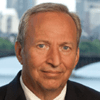Outside of the security domain, overhauling the World Bank offers US President Joe Biden’s administration its greatest opportunity for a key foreign-policy achievement. The World Bank should be a major vehicle for crisis response, post-conflict reconstruction and, most importantly, for supporting the huge investments necessary for sustainable and healthy global development. But currently it is not.
The remarkable feature of the World Bank’s financial model is that even before it is reformed, which is very necessary – and even without considering its ability to mobilise private-sector finance – each US$1 of appropriated funds from the United States catalyses a permanent increase in lending of more than US$15dollars. (This is because other countries contribute to the Bank as well, and paid-in capital is leveraged many times over.)
Uniquely, the World Bank and International Monetary Fund have the capacity to do very large things worldwide and at low budgetary cost. They are multilateral, and most of the shareholders uphold Western values. The World Bank is located in Washington, DC, and traditionally has American leadership.
Charles Kenny at the Center for Global Development (CGD) and others have pointed out that despite much rhetoric, the world is falling far short in its collective ability to respond to crises. Kenny’s searing analysis shows that despite today’s ‘polycrisis’ – looming global recession, high interest rates and a strong dollar buffeting many economies, rising food and energy prices, the ongoing pandemic, and accelerating climate change – World Bank lending has not even kept up with growth since 2017. In fact, it has declined in the last year – and the IMF has not done much better.
This should be unacceptable to the US and other major IMF and World Bank shareholders. Given the magnitude of global challenges over the next decade, we should be thinking in the trillions not billions for the Bank. If war is too important to leave to generals, financing global survival is too important to leave to green eyeshades and international bureaucrats.
Four steps are necessary, and all are broadly consistent with US Treasury Secretary Janet Yellen’s recent speech and a recent statement from a group of think-tanks.
First, the Bank needs a new and broadened mission statement embracing sustainability and global public goods as well as poverty reduction. There can be no enduring success in poverty reduction without a global paradigm-shift to sustainable development; and there can be no path to a global green transition without progress in poverty reduction. Mission statements are meaningless without action. The Bank’s shareholders insist on a financial vision that will result in US$2 trillion of lending over the 2024-34 decade.
Second, the Bank must overhaul its financial model to include more extensive leveraging of its capital; reconsider lending instruments, including their time horizon and degree of conditionality; and combine efforts of the Bank’s co-financing with those of the International Finance Corporation (the Bank’s private-sector lending arm) and the Multilateral Investment Guarantee Agency to spur private investment.
Consideration should be given to ideas advanced by Mark Plant, also of the CGD, and others to use special drawing rights (SDRs, the IMF’s reserve asset) as capital for development. (So far, despite much ballyhoo, new allocations of SDRs, as best as I can tell, have had no impact on the pace of development around the world.)
Third, there is a pressing need to reform the Bank’s culture and procedures to emphasise speed of execution. The time will come when reconstruction of the Ukraine will be a key priority. Without reform, I hope but do not expect that funds committed will be rapidly transferred on promised schedules – unlike in so many other post-conflict situations.
I also hope that the Bank can move away from what I once called its “convoy approach” – all sectors in all countries – toward an emphasis on what is most important. Recognition that provision of large amounts of funding at moments of crisis coming with maximum speed can be of enormous value to client countries.
Fourth, these steps should be reflected in a major green capital increase to be agreed within a year. Given how dire the world’s needs are, the increase should be 2-3 times as large as the previous US$13billion increase in 2018. I would estimate that a US$30billion dollar increase in paid-in capital, which would cost the US about US$5billion over eight years, could support nearly an extra US$100billion in annual lending – heavily directed toward the energy transition.
This is more the beginning of a vision than a detailed programme. My goal is to convey a sense of the urgency and scale the moment demands. I have not been in office for quite a while, so I have lost sympathy with the constraints that staff of the Bank and the world’s Treasuries will point to. Guilty. On the other hand, there are hinge moments in history when the transition from inconceivable to inevitable is dizzyingly rapid.
This must be the case. After all that has happened in the last few years, there is an urgent need for the US and its allies to regain the trust of the developing world. There is no better means of regaining trust than through the collective provision of large-scale support for countries’ highest priorities. And there is no more rapid and effective way of mobilising support than through the World Bank. If we do not see major progress on these issues at the G20 Finance Ministers and Central Bank Governors meeting this week in Washington, DC, a major opportunity will have been squandered.
Lawrence H. Summers was Chief Economist of the World Bank (1991-93), US Secretary of the Treasury (1999-2001), Director of the US National Economic Council (2009-10), and President of Harvard University (2001-06) where he is currently University Professor.
Copyright: Project Syndicate, 2022.
www.project-syndicate.org










